|
|
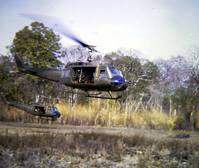
LK-6.jpgWe'll never forgetMain mode of transportation from start to finish: the Huey.
|
|
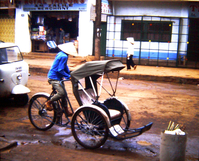
LK-5a.jpgThird world countryPleiku taxi ride. This is the way it was in most cities/villages in the 60s...excluding Saigon.
|
|
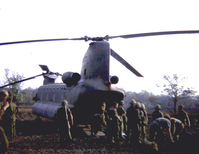
LK-2.jpgThe old wayBack in the early stage of the war, cannoneers had to manually push their howitzer into the rear of a Chinook. As time went by, the howitzers were slung underneath the Chinooks.
|
|
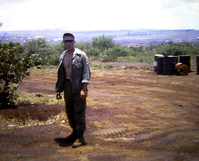
LK-16.jpgSp4 Larry Keller at Pleiku Base CampIt's a scenic view from the Bn Base Camp, then located in Pleiku.
|
|
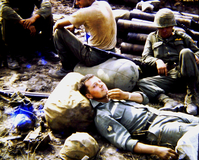
LK-10.jpgSp4 Larry Keller - Taking a breakDismantling a firebase howitzer position and moving involves a lot of hard man-hours. Larry has been at work for 24 hours with no sleep.
|
|
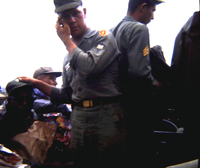
LK-4.jpgSp4 Larry KellerSp4 Larry Keller in stateside fatigues.
Well, they ain't jungle fatigues, are they? Nope, the "early arrivals" were not very well supported with weapons, food and uniforms. That came later.
|
|
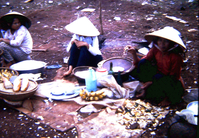
LK-5.jpgOpen marketIn many cases, the local civilians seized the opportunity to sell something to the GIs.
|
|
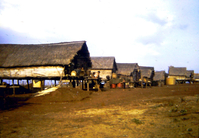
LK-7a.jpgMontagnard LonghousesMost Vietnamese villages were mainly huts; the Montagnards built longhouses.
|
|
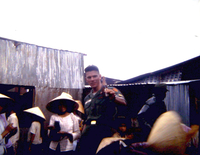
LK-17.jpgMingling with the localsLarry will take the local beer over not having a beer at all.
|
|
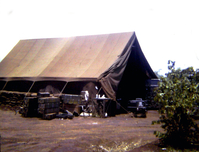
LK-7.jpgMaintenance Tent at the Pleiku BaseLarge CP tent were common in the early stage; not much protection from mortar attacks.
|
|
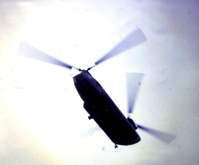
LK-2b.jpgLoaded and goingThe Chinook takes off with a bellyfull of cannon.
|
|
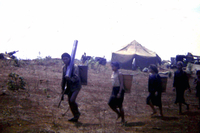
LK-12.jpgIt's mine now!A civilian swipes a stovepipe and carries it away.
Occasionally, a firebase position would be close to civilian villages. Note the howitzer at top left.
|
|
|
|
